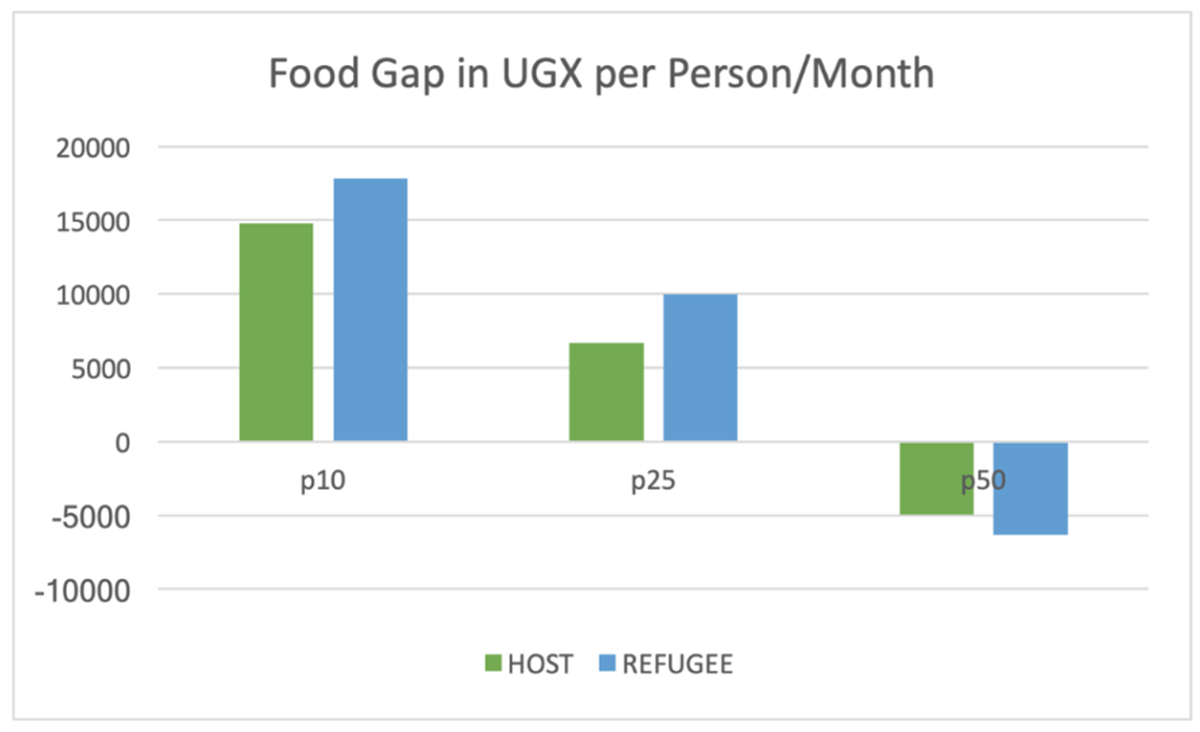Beginning in February 2019 and through the following 12 months of implementation, Graduating to Resilience Activity will provide consumption support in the form of monthly cash transfers through a mobile money provider to 6,629 households in the three intervention groups including both refugee and host community participants. The transfer is intended to help households meet their basic food and dietary needs (consumption smoothing) so that households can experience the stability needed to engage in other, longer-term activities (as also spelled out in the Activity’s Theory of Change).
By using a cash-based modality, rather than in-kind or direct food support, participants are empowered to establish their own priorities, make choices, and procure what they need most for their families when they need it. Steady consumption support over twelve months will afford stability during lean seasons and predictability of the extra income to invest in household expenses, such as school fees.
To calculate the amount given to each household, the Activity considered several factors, such as:
- Other programs’ provision of cash transfers such as the World Food Program’s (WFP) minimum expenditure basket of 31,000UGX per person per month in the refugee settlement;an amount calculated to buy the basic food basket to ensure 2,100kcal/day/person.
- Economic differences between the host community and the refugee community such as different income levels, spending behaviours, preferences, prices of food and other essential goods, etc.
Given the explicit focus on ensuring food and adequate nutrition, the Activity decided to determine the cash transfer amount of money that would allow a household to meet its minimum food needs per month, based on real price information compared with an objective baseline analysis of household expenditure.
At the end of 2018, Innovations for Poverty Action (IPA), the external evaluation partner of the Activity, had gathered consumption values for food items (expressed in 2018 Ugandan Shillings-UGX) from 1,111 beneficiary households (589 from the host community and 522 from among the refugees), and the overall breakdown by selected quintiles[1]turned out to be as follows:
[1]“p10”, “p25”, “p50” mean the 10thpercentile, 25thpercentile and 50thpercentile of the distribution for the consumption values, for both refugees and host.
Exhibit 1

As previously mentioned, WFP determined that 31,000UGX/person/month was sufficient to guarantee a 2,100kcal/day/person diet. Taking into account daily food consumption per person from Exhibit 1, we calculated the food gap, or the difference between what an individual currently consumes and what he/she needs to consume to maintain a 2,100kcal/day/person diet, by subtracting the totals from the 1,033UGX/person/day target calculated by WFP as seen in Exhibit 2.
Exhibit 2

When calculating food needs on a monthly basis the food gap per person per day was then multiplied by 30. Exhibit 3 shows that the 10thpercentile (p10) of the host community had a monthly food gap of 14,775 UGX per person and the 25thpercentile (p25) experienced a gap of 6,704 UGX. In the refugee community, the 10thpercentile is experiencing a monthly food gap of 17,813 UGX, while the 25thpercentile is experiencing a food gap of 10,013 UGX. The 50th percentile (p50) of both communities is experiencing a food surplus (i.e. their current food consumption is above the amount needed to achieve 2,100Kcal/person/day).
Exhibit 3

In addition to considering the intended outcomes of consumption support and analysis of the food gap, the final factor was available budget. The Activity decided to provide consumption support amounts based on the food gap of the 10thpercentile of each population (host/refugee). This means that 90% of host and refugee participants would be enabled to reach or surpass the minimum food consumption level, and the remaining 10% would significantly approach it.
As a result, the Activity will provide beneficiary households 15,000 UGX per person per month in the host community and 18,000 UGX per person per month in the refugee community to help meet the basic food and dietary needs for the first 12 months of implementation.
